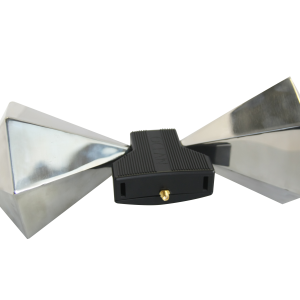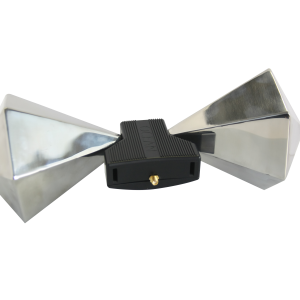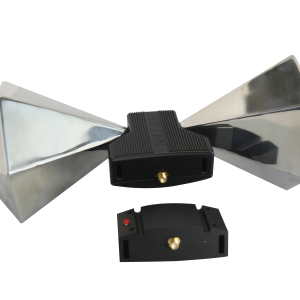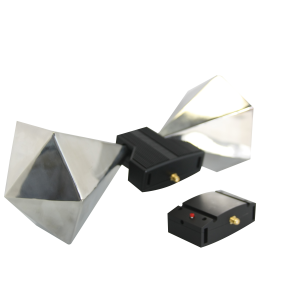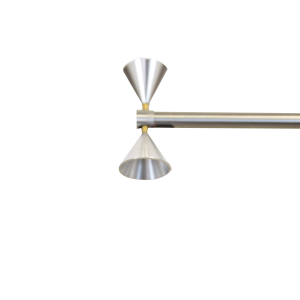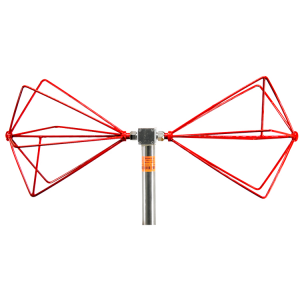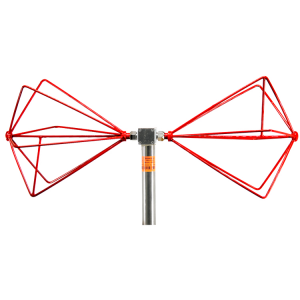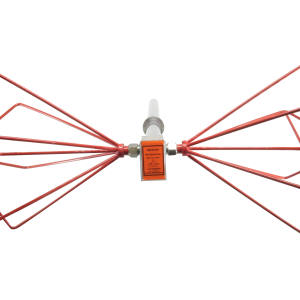Biconical Antenna
Biconical Antenna are broadband dipole antennas that are made up of double conical conductive objects. These antennas have dipole like characteristics, with an enormous wide bandwidth due to the double cone elements structure. As an infinite structure, Biconical Antenna is truly broadband. However, its size and shape are impractical in real applications, and the truncation of its length limits its bandwidth performance. Modifying its rotationally symmetric shape to planar ones also causes a similar effect. Thus numerous design changes are considered and perfected to improve the modified antenna shapes and maintain the wideband characteristics.
The Biconical antenna have an Omni-directional radiation pattern in the H-plane comparative to a dipole antenna. A coaxial connector is associated with the center of the antenna. The Biconical antenna can be mounted or gotten off easily with the hoop fixtures.
The family of Biconical antenna is generally broadband in input impedance. However, their radiation characteristics change with frequency. Therefore, the design challenges are in maintaining the radiation performance satisfactory within their impedance bandwidth.
The Biconical antenna is a simple modification of a dipole antenna, where the conductor thickness linearly increases with the distance from the origin or the antenna center. Mathematically, each arm of the antenna is an infinite conducting cone, and the geometry is a rotationally symmetric structure. In symmetric Biconical antenna, the cone angles for the two arms are equal, as shown in Figure
| (a) Biconical geometry | (b) Spherical Waves |
The major difficulty with biconical antenna is its volume and weight, which can be significant at low frequencies. The latter can be overcome by replacing the solid surfaces with wires, similar to other conducting surface antennas, like corner reflectors. Since for the fundamental TEM mode the induced currents on the surface of this antenna travel in the radial direction, the conducting wires will be radial and the geometry will modify to the wire cones shown in Figure
| Wire mesh approximation to biconical antennas |
The rotational symmetry of these biconical antenna can cause azimuthal mode excitations that can introduce cross-polarization. In practice, the number of cones is preferable to be eight or larger to minimize the cross-polarization effects. This means that every 45◦ a cone wire must be located. In the truncated cones, the sharp bends at the cone end cause severe impedance discontinuities, and thus reflections that cause the bandwidth limitations. These reflection effects can be reduced by tapering the cone ends, rather than truncating them. Each truncated cone, therefore, becomes a dual back-to-back cone. However, the end cones usually are made much smaller, as shown in Figure
| Planar double triangle approximation to biconical antennas |
For the higher-order modes, the currents will travel in both azimuthal and radial directions and the solid cones can only be replaced by wire meshes, to allow current flow in all directions.

